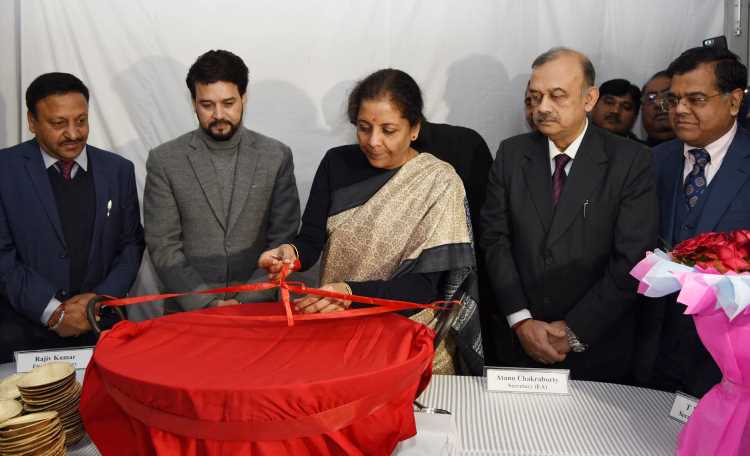
The Union Budget is being prepared amid global uncertainties, rising market, slowing growth and rising food inflation. The first full-year Budget of finance minister Nirmala Sitharaman, therefore, needs to be a balanced one as is expected to fuel the country’s transformation into a $5 trillion economy in five years. The Narendra Modi government will need to take some initiatives to revive growth in the economy and the focus needs to be on fiscal policy, interest rates, banking sector, and employment.
A national fiscal council
In recent years, it has been noticed that whenever a corrective economic measure has to be announced, the Union government takes the initiative. These initiates could be for addressing the economic slowdown, poverty, unemployment or other socio-economic issues. The state governments, as well as large municipal corporations, especially those which house industrial hubs and business conglomerates, should also participate in these initiatives in a concerted manner.
READ: Budget 2020: Middle-class distress biggest challenge for Nirmala Sitharaman
The fiscal council should be a permanent body that will analyse the economic situation, especially the fiscal situation, and take corrective measures along with the Centre, state and municipal corporations. Municipal corporations of big cities such as Mumbai, Kolkata, Chennai, Delhi, Hyderabad, Bangalore, Surat, Vadodra should be part of the council. The council will follow the spirit of fiscal federalism and the policy measures will be more effective as they will be complemented by different levels of administration.
Separate debt from monetary management
The objective of debt management is raising resources at minimum cost while containing the risks. The monetary policy looks to maintain a balance between price stability, growth and financial stability. The debt management function is thus subsumed in the overall objectives of the monetary policy in India. By separating debt from monetary management, the governments seek to focus on debt management to preserve the integrity and independence of the central banks, to shield debt management from political interference, and ensure transparency and accountability in borrowing. Hence the separation of debt from monetary management by many countries while ensuring that their activities are coordinated.
READ: Budget 2020: Policy prescriptions for $5 trillion and beyond
In India, separation of debt management will help establish transparency, and assign specific responsibility and accountability on the debt manager. This could lead to professional management of government liabilities, currently divided among different offices, with a focused mandate to operate on sound economic and commercial principles. The strategy could help the government raise funds at competitive rates. And, most importantly, the RBI will be able to focus on monetary policy and interest rates, exclusively.
A national institute of entrepreneurship
To achieve high growth, the available resources should be utilised in an optimum way. To unleash the demographic advantage enjoyed by the country, it needs to develop entrepreneurship among the nearly one crore people that enter the workforce annually. The government and the private sector may not be able to provide jobs to all of India’s youth. Start-ups, MSMEs and job creators are the need of the hour. Given the lack of training, mortality rate is very high among MSMEs. Therefore, institutes that impart entrepreneurship training are required in India. Along with training and handholding offered at incubation centres, subjects such as accounting, labour laws, marketing, finance, tax laws, economics, leadership and ethical values need to be taught to young entrepreneurs. These institutes will have to be different from ITIs that focus on short-term skilling in plumbing, electrical work and tailoring, IIEs need to aim at producing Googles and Apples in the country. Time has come to set up IIEs at different states offering three-year courses, kike IITs and IIMs were set up in 1960s and 70s. The courses should produce trained and confident entrepreneurs who can run business and banks should be ready to finance them.
An appropriate banking framework
In an emerging economy like India, banks play an important role in financing industry unlike the developed markets where stock markets play a more significant role. In the journey of economic development of India, source of funds for businesses has shifted from money lenders and family to banks and financial institutions. In December 2017, assets of financial sector accounted for 136% of India’s GDP, and bank assets were 60% of the GDP, according to the IMF. This transition is mainly because of the nationalisation and consequent government ownership of banks in 1955, 1969 and 1980. In recent years, public sector banks (PSBs), accounting for nearly 70% of total banking activities in the economy, have been under stress because of rising non-performing assets. The government has been bailing out and recapitalising PSBs regularly, and trying to strengthen their operations and governance.
To meet the target of $5 trillion economy, the banking system needs to be geared up. In this context, the country needs to think whether Basel Norms will act like a constraint.
READ: Can MNCs negate progress towards a just global tax regime
In India, which has one bank with history of more than two centuries and many banks with a history of a century, having survived ordeals of Indian Mutiny of 1857, World Wars, Great Depression and the Partition of 1947, there must be important lessons to distil? The suggestion is that we need to examine the history of Indian banks, distil and crystalise lessons which will be more applicable to the context of our country. Basel Norms could constrain our efforts by imposing stiff capital adequacy ratios that may not be necessary for our public sector banking culture that is largely conservative. Basel Norms were built for countries which have a very shoddy and short banking history, and mainly for banks in the private sector.
Dr Charan Sigh is a Delhi-based economist. He is the chief executive of EGROW Foundation, a Noida-based think tank, and former Non Executive Chairman of Punjab & Sind Bank. He has served as RBI Chair professor at the Indian Institute of Management, Bangalore.


